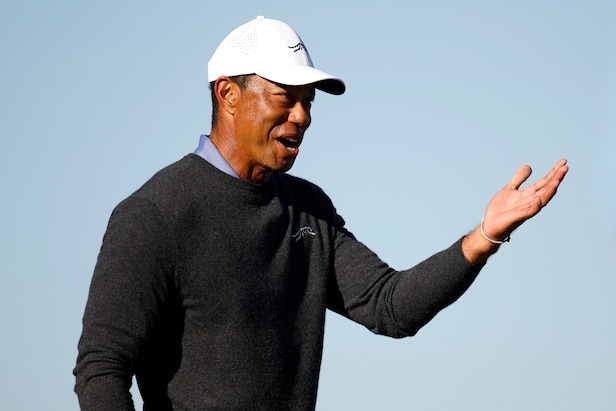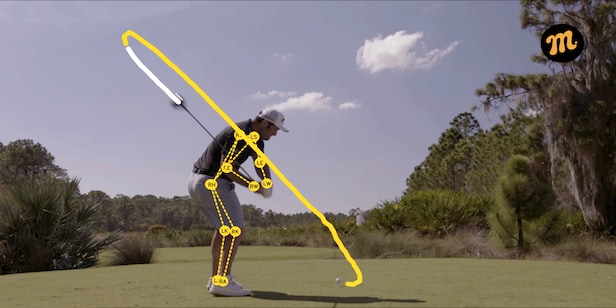Why a misunderstood golf swing move is making a comeback – Australian Golf Digest

- by Admin
- December 13, 2024

Instruction trends come and go. In the 1990s, a big one swept onto the scene.
The idea that golfers should keep their trail knee – or right knee for right-handed golfers – bent on the backswing.
In the coaching and golf swing nerd story community, this idea has gone through a pretty interesting story arc. It was the trendiest move in golf, then it became vilified, and now some good science is bringing it back.
Here’s why you should care.
Bent trail knee: A quick history
Look back at the flowing golf swings of legends Bobby Jones, Sam Snead or other players of that era, and generally speaking, you won’t see many players from that generation keeping much bend in their trail knee. The goal of the backswing was simple: make the biggest hip turn you can on the way back, then the biggest turn you can on the way through.
Draw king, Bobby Jones. pic.twitter.com/ryUPkcDi3k
— LKD (@LukeKerrDineen) November 26, 2024
Then in the ’90s, for a variety of reasons that aren’t worth getting into, teachers began focusing on how to generate torque between golfers’ upper and lower body. A common method at the time was teaching golfers to make a big shoulder turn while restricting their hip turn by keeping more bend in their trail knee.
Creating a big X-Factor stretch (which measures the difference between golfers’ upper and lower body turns) can be a good thing.
Bombers like John Daly and Gordon Sargent generate huge X-Factor stretches. But trying to turn your shoulders a lot while trying to not turn your hips at all is often a good idea gone bad. Done wrong, it can hurt golfers’ backs. It’s a misinterpretation that Golf Channel’s Brandel Chamblee has aggressively spoken out against and doused the trend in cold water.
Why it’s coming back
The first iteration of an idea is almost never the perfect one. And the same is true here.
Many teachers nowadays say that the problem wasn’t keeping the trail knee bent (which can be good if done right); it was actively trying to bend your knee while trying to not turn your hips. Turning your hips is great, as Dr Joe Lacaze, a former Navy SEAL and biomechanics instructor who founded the Rotex Motion exercise device, as long as you do it the right way.
Lacaze says…
- Golfers’ primary power source comes less from the torque between their upper and lower bodies, and more from torque between their lower body and the ground.
- The key to being able to push and twist off and around the ground is to load your right leg.
- When you try to turn your hips too much, and straighten your right leg too much as a result, you lose your ability to push up and around.
- The goal is to turn so you create a chain reaction of activating the muscles all down your right leg.
“It’s been proven that pressure into the ground is what causes the most power and speed,” Dr Lacaze says. “The pelvis is the transmission of force from the ground to your upper body; we need to load efficiently so we generate power, prevent injury, and allow the pelvis.”
A good feeling: Squash the bug with your toes
Golf Digest Best Young Teacher Michael Dutro says to think about creating a quality of turn, rather than a sheer quantity.
“If you just lock out your right leg and spin your whole pelvis open, you may get more turn, but you put no torque into the ground at all,” he says. “When you do that, you’re actually unloading your backswing.”
It’s one of the reasons why you’d see players from past generations pair their straighter right leg with the famous Snead squat between the backswing and downswing, Dutro says: a way of re-loading their trail leg and creating some more torque with the ground.
Anyway, to create that chain reaction Dutro and Lacaze talk about, Dutro suggests a simple drill:
- Lift your right heel (for right-handed golfers) off the ground
- Pretend there’s a bug under your right toes
- Twist your right toes to the left into the ground, squashing the bug, but not allowing your foot to move
- Maintaining this feeling, now turn into your right side
“Now you’ve created that chain reaction from your foot all the way up your leg, around your femur,” Dutro says. “That’s power. Your muscles are awake now. That’s a loaded, powerful turn.”
So remember: squash the bug. It may give you the best of both worlds.

The Latest News
-
December 22, 2024Australian cricket team at MCG: Near 60% win record, unbeaten for three years | Cricket News – Times of India
-
December 22, 2024Zheng to skip United Cup, focus on Aussie Open
-
December 22, 20242024 runner-up Qinwen Zheng pulls out of Australian Open lead-in event
-
December 22, 2024Cricket Australia ‘disgraced’ by fans after ’embarrassing’ BBL visual; Sam Konstas flops before potential debut vs India
-
December 22, 2024‘I want to be out there’: Webster’s long wait for Test debut could be over with Marsh’s all-round capability clouded





